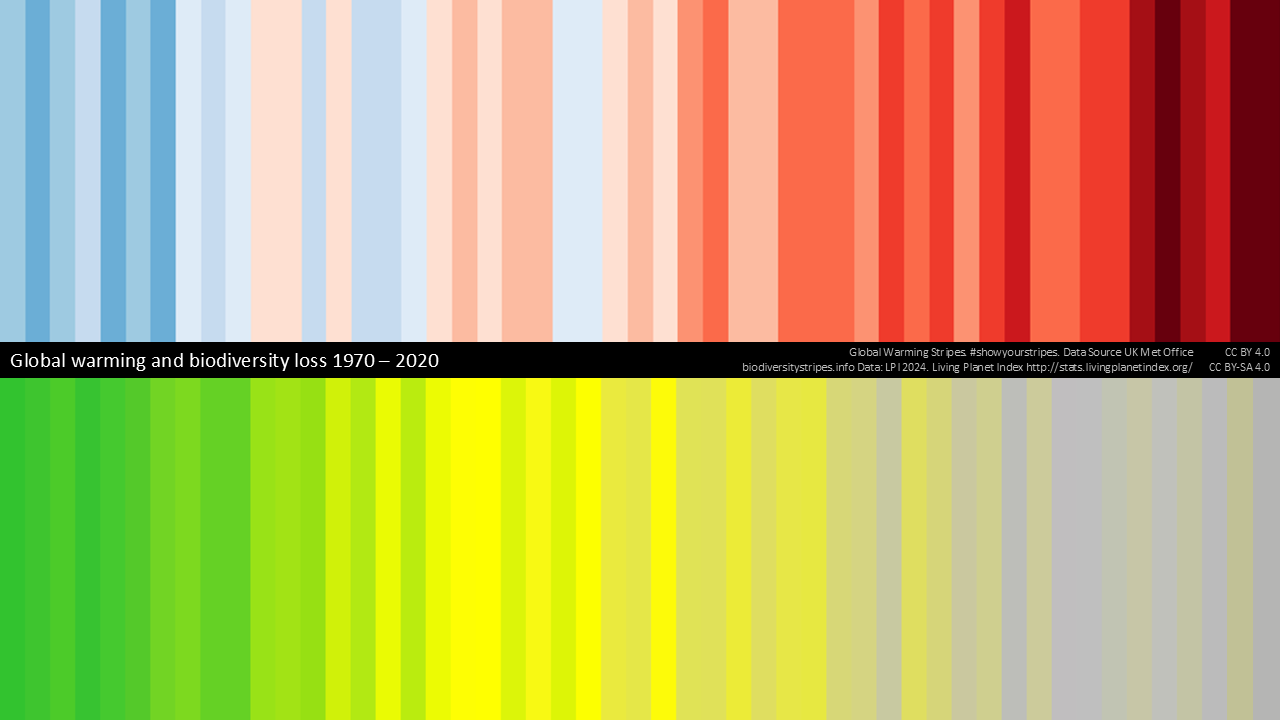Climate Change & Biodiversity Loss: Two sides of the same coin
The way in which information is framed and expertise is communicated is crucial for prioritising environmental issues. It's time to raise the nature agenda, to show that biodiversity loss and climate change are two sides of the same coin. The solutions to both are deeply intertwined.

Biodiversity is the foundation of all life on Earth, and fundamental to human well-being. Biodiversity and healthy ecosystems can serve as natural buffers against extreme climate and weather events, such as changing patterns of rainfalls, droughts, storms, and other disasters. They are an important resource for increasing resilience, and reducing the risks and damages associated with negative impacts of climate change.
Ecosystems such as forests, rangelands, peatlands, and wetlands represent globally significant carbon stores. Their conservation, restoration, and sustainability are critical to achieving the targets of the Paris Agreement. By working with nature, greenhouse gas (GHG) emissions can be reduced by up to 11.7 gigatonnes of carbon dioxide equivalent per year by 2030, which is over 40% of what is needed to limit global warming.
But ecosystem degradation is already affecting the well-being of 40% of the global population. And global warming is likely to become one of the most significant drivers of biodiversity loss by the end of the century.
It's a pretty bleak picture. So, what can we do about it?
Raising the nature agenda
In a 2018 Frontiers peer-reviewed article, titled Our House Is Burning: Discrepancy in Climate Change vs. Biodiversity Coverage in the Media as Compared to Scientific Literature, the authors revealed that, from 2000 to 2017, media coverage of climate change was up to eight times higher compared to biodiversity. And that this discrepancy could not be explained by different scientific output between the two issues.
They emphasised that the way in which information is framed and expertise is communicated is crucial for prioritising environmental issues. And they urged for an international communication strategy to raise public awareness on biodiversity issues, including several initiatives that scientists could undertake to better communicate major discoveries to the public and policy makers.
Birth of the Biodiversity Stripes
Miles Richardson, Professor of Human Factors and Nature Connectedness, and founder/lead of the Nature Connectedness Research Group, at the University of Derby in the UK, rose to the challenge.
Familiar with the now globally recognised Climate Stripes developed by UK climate scientist Prof. Ed Hawkins at the University of Reading, Prof. Richardson decided to create a version for biodiversity.
He found the data, spoke with ecologists, consulted with other experts and, in 2022, released the Biodiversity Stripes. In a similar manner to the ‘warming stripes’ graphics, bars of colours are used to illustrate the loss of biodiversity over time.
"There's a battle for attention every day, especially if you live in an urban environment. But the stripes format seems to break through and grab people's attention… I think both the climate and the biodiversity stripes show the symptoms of a failing relationship with nature. That's the underlying cause, and we need to change that." – Prof. Miles Richardson

Harmony with nature & sustainable development
The theme of this year’s International Day for Biodiversity (IDB) is ‘Harmony with nature and sustainable development’, aligned with the vision of ‘living in harmony with nature’ adopted within the Kunming-Montreal Global Biodiversity Framework (KMGBF).
A global agreement adopted by 196 countries at the COP15 in December 2022, the KMGBF sets out an ambitious blueprint for the transformation of our societies’ relationship with nature. Its primary goal is to halt and reverse biodiversity loss by 2030.
All Parties are expected to prepare National Biodiversity Strategies and Action Plans (NBSAPS) reflecting the ambition of the KMGBF. To maximise synergy, the NBSAPs should be integrated into broader National Sustainable Development Strategies guided by the 17 Sustainable Development Goals (SDGs) and the Pact for the Future.
The four overarching KMGBF goals to be achieved by 2050 focus on ecosystem and species health:
- To halt human-induced species extinction
- The sustainable use of biodiversity
- Equitable sharing of benefits
- Implementation and finance to include closing the biodiversity finance gap of $700 billion per year
Some of the KMGBF's 23 targets to be achieved by 2030 include:
- 30% restoration of degraded ecosystems
- 30% conservation of land, sea, and inland waters
- Halving the introduction of invasive species
- $500 billion/year reduction in harmful subsidies
Whole-of-government, whole-of-society approach
In order to catalyse transformation, we need to continue building a strong, collective voice. By doing what we can within our own sphere of influence, we can help create widespread awareness, promote behavioural shifts, influence policies and practices, and compel decision-makers to mobilise change. Whether that’s through self-directed learning, donating, volunteering, voting, signing petitions, or participating in protests – every grassroots effort counts.

